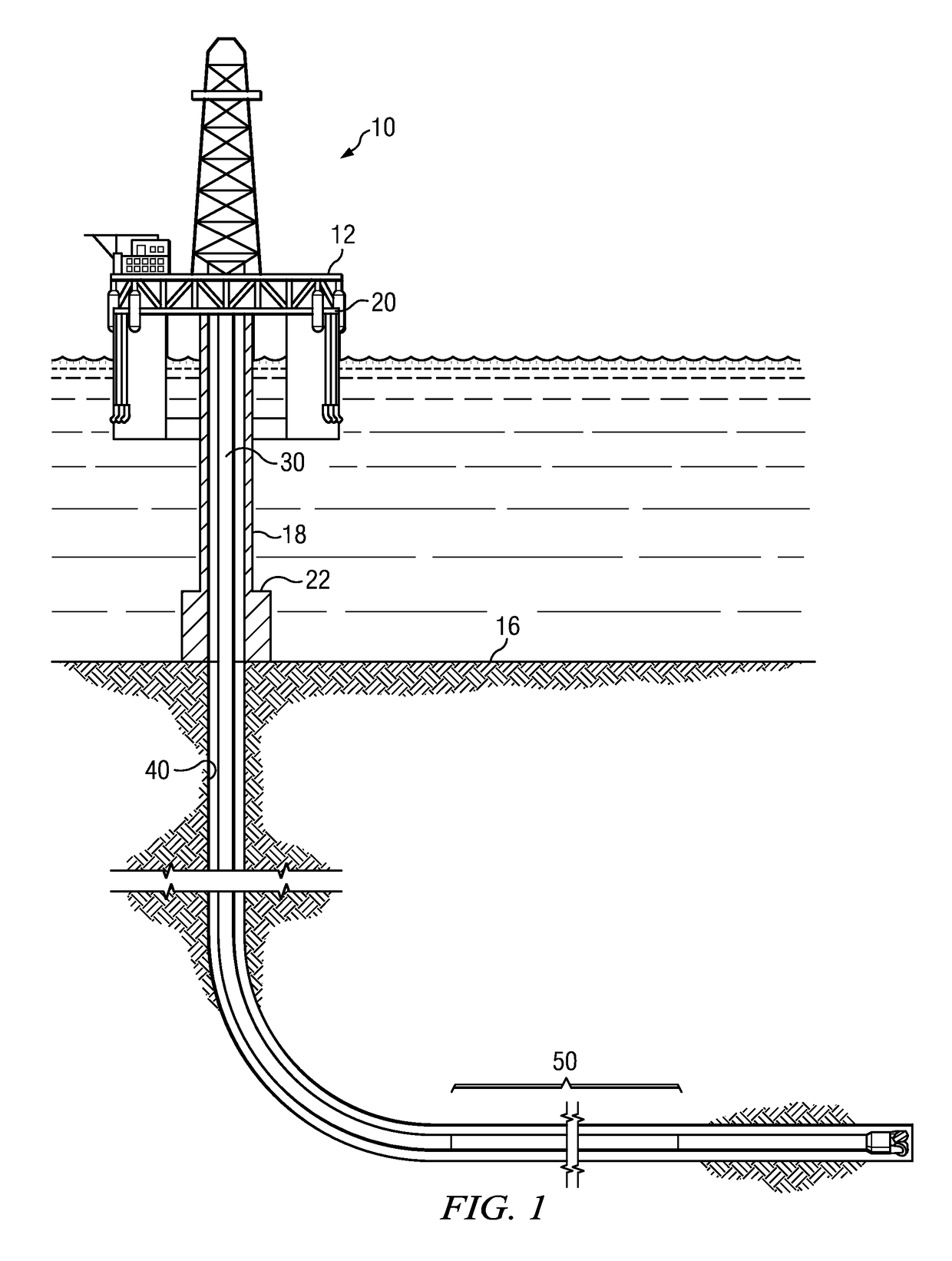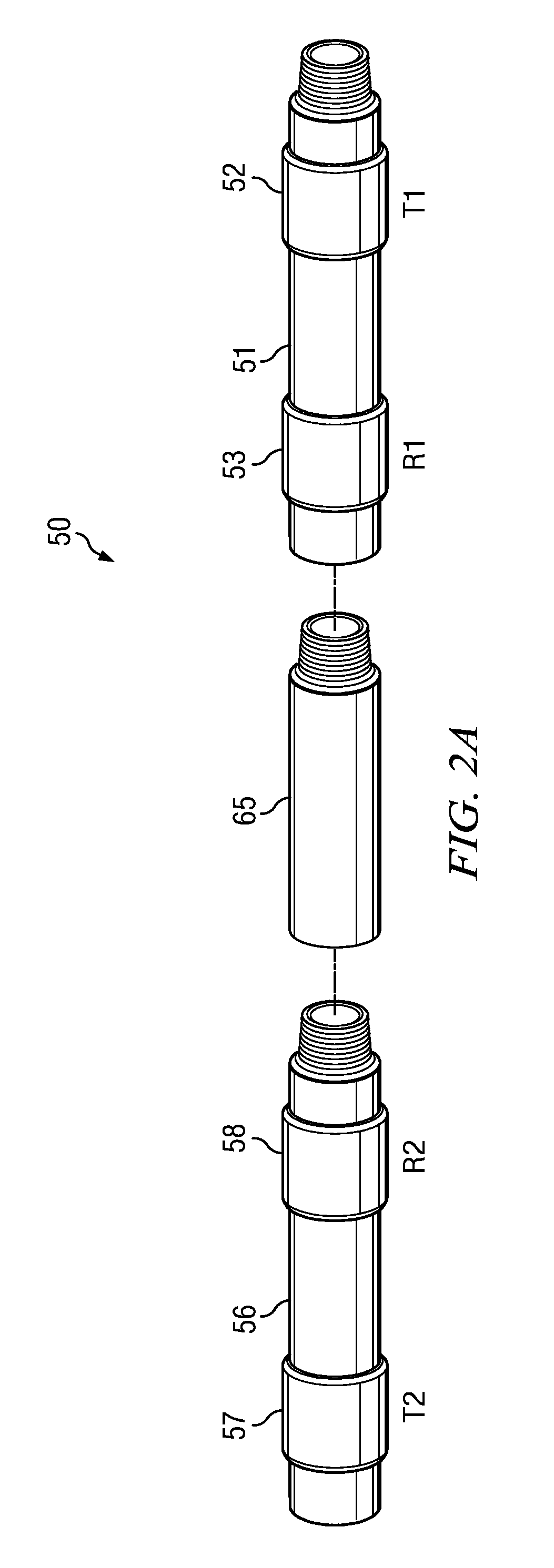Compensated deep propagation measurements with differential rotation
a deep propagation and differential rotation technology, applied in the field of downhole electromagnetic logging, can solve the problems of insensitive bending and alignment angle error in disclosed methods and apparatus, complex actual formation structure, and inability to provide fully gain compensated tri-axial propagation measuremen
- Summary
- Abstract
- Description
- Claims
- Application Information
AI Technical Summary
Benefits of technology
Problems solved by technology
Method used
Image
Examples
embodiment 50
[0018]FIGS. 2A and 2B (collectively FIG. 2) depict electromagnetic measurement tool embodiment 50. In the embodiment depicted on FIG. 2A measurement tool 50 includes a first transmitter 52 and a first receiver 53 deployed on a first sub 51 and a second transmitter 57 and a second receiver 58 deployed on a second sub 56. The first and second subs 51 and 56 may be axially spaced apart substantially any suitable distance to achieve a desired measurement depth.
[0019]FIG. 2A further depicts a drilling motor 65 deployed between the first and second subs 51 and 56. The drilling motor may include, for example, a progressing cavity hydraulic motor (also referred to in the art as a Moineau style power section). Such motors are common in drilling operations (e.g., slide drilling and power drilling operations) and make use of hydraulic power from drilling fluid to provide torque and rotary power, for example, to a drill bit assembly located below the motor (and below sub 51). In the depicted em...
embodiment 100
[0025]FIG. 3A depicts a flow chart of one disclosed method embodiment 100. An electromagnetic measurement tool (e.g., measurement tool 50 on FIG. 2) is rotated in a subterranean wellbore at 110 such that the first and second subs rotate at different rates (e.g., such that the first sub rotates at a higher rate than the second sub). Electromagnetic measurements are acquired at 120 while the tool is rotating and processed to obtain harmonic voltage coefficients. Selected ones of the harmonic voltage coefficients are rotated mathematically at 130 to simulate rotation of the x and y antennas in the R1 and R2 receivers such that they are rotationally aligned with the x and y antennas in the T1 and T2 transmitters. Such rotation removes the effect of the offset angle α. The mathematical rotation of the harmonic voltage coefficients may further include rotation by θ1, θ2, or θ2−θ1 such that the R1 and R2 receiver measurements are rotationally aligned with one another (and / or with a global ...
PUM
 Login to View More
Login to View More Abstract
Description
Claims
Application Information
 Login to View More
Login to View More - R&D
- Intellectual Property
- Life Sciences
- Materials
- Tech Scout
- Unparalleled Data Quality
- Higher Quality Content
- 60% Fewer Hallucinations
Browse by: Latest US Patents, China's latest patents, Technical Efficacy Thesaurus, Application Domain, Technology Topic, Popular Technical Reports.
© 2025 PatSnap. All rights reserved.Legal|Privacy policy|Modern Slavery Act Transparency Statement|Sitemap|About US| Contact US: help@patsnap.com



